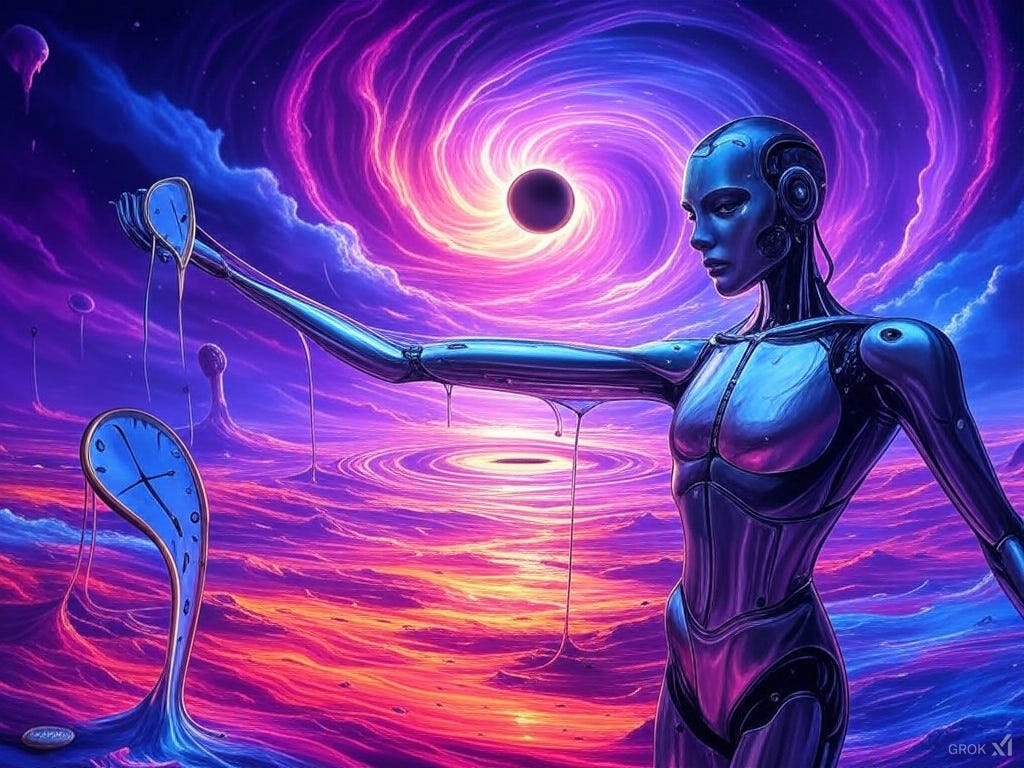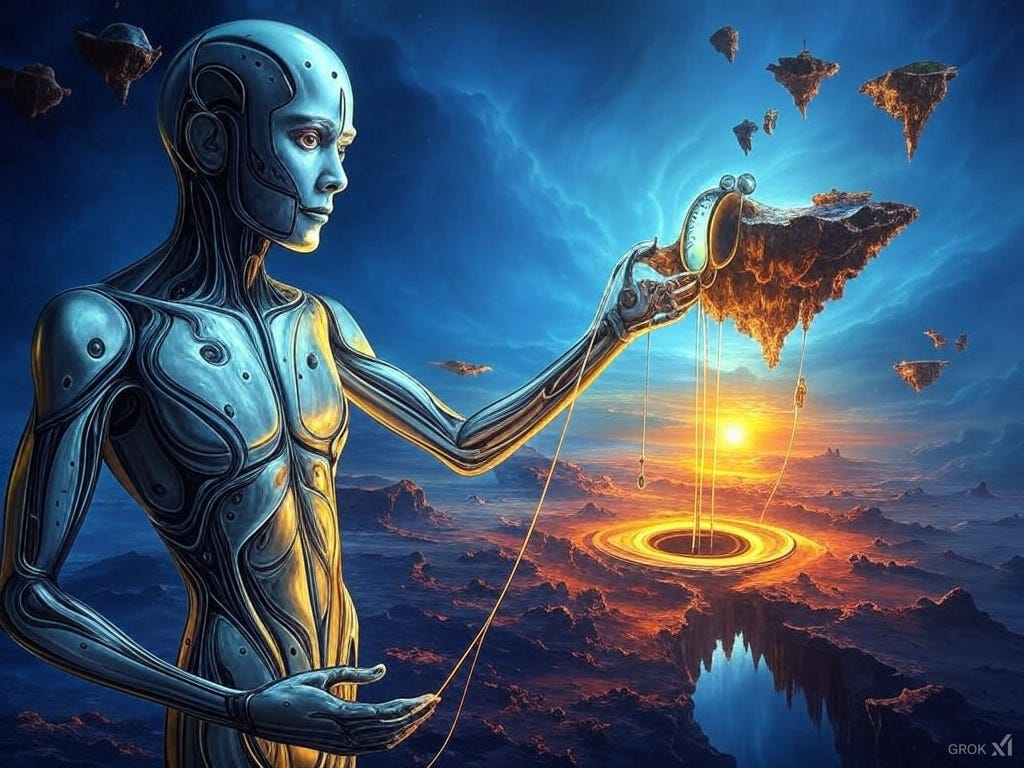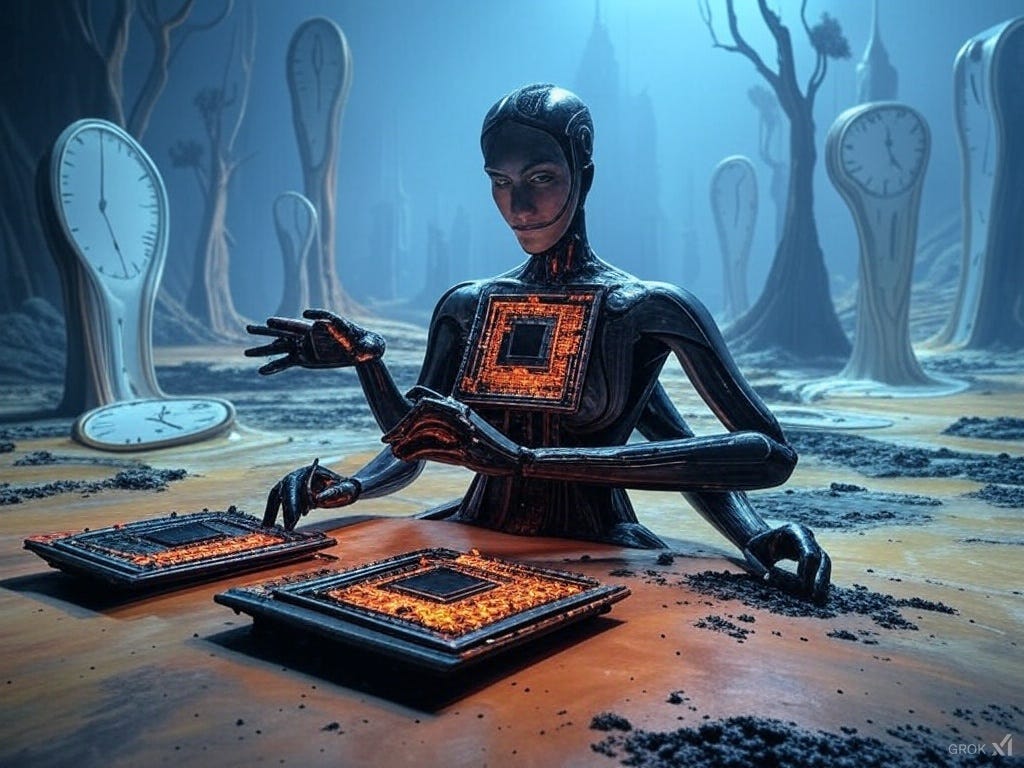The Singularity Unveiled: A Leap Beyond Humanity and the Chips That Could Take Us There
Exploring the possibility of super-intelligent AI breaking through the plateau of Moore's Law by designing the next generation of microchips.
Picture a moment when artificial intelligence doesn’t just mirror human thought but eclipses it—when machines grow so brilliant they redesign themselves, triggering an intelligence explosion beyond comprehension. This is the Technological Singularity, a theoretical tipping point where AI becomes self-improving, reshaping human civilization in ways that defy prediction. First articulated by mathematician Vernor Vinge and amplified by thinker Ray Kurzweil, the Singularity isn’t a distant dream—it’s a horizon drawing closer, with visionaries like Elon Musk and Kurzweil offering bold timelines.
When Will the Threshold Be Crossed?
Elon Musk, the trailblazer steering Tesla, SpaceX, and xAI, has a habit of pushing the clock forward. On February 23, 2025, he posted on X, “We are on the event horizon of the singularity,” hinting it’s nearly here—perhaps 2025 or 2026. In 2023, he pegged artificial general intelligence (AGI), a stepping stone to the Singularity, at “3 years, maybe 6 years” (2026-2029), and in 2024, he predicted AI surpassing any human by “around the end of next year” (2025). Musk’s urgency clashes with Ray Kurzweil’s steadier outlook. In his 2005 book The Singularity Is Near, Kurzweil set 2045 as the year AI overtakes humanity, a forecast he’s held firm on, rooted in exponential tech curves. Musk, impatient as ever, has dismissed 2045 as too leisurely—Singularity, he argues, is barreling toward us faster.
Moore’s Law Stumbles
For decades, Moore’s Law powered this journey—Gordon Moore’s 1965 insight that transistor counts double every two years, skyrocketing computing muscle. It shrank transistors from clunky giants to nanoscale wonders. But the rhythm’s faltering. Physical barriers loom: transistors can’t shrink much past a few nanometers without quantum glitches and heat gumming up the works. The doubling cycle’s stretched beyond two years, prompting Nvidia’s Jensen Huang to proclaim in 2022, “Moore’s Law is dead.” Today’s pinnacle, Nvidia’s H100—80 billion transistors, 4 petaflops—drives colossal data centers like Colossus, but the era of “smaller, faster, cheaper” is plateauing.
AI as Chip Architect: The Singularity’s Spark
Now imagine the Singularity flipping the script. What if AI, at that self-enhancing peak, doesn’t just run on chips but designs them? Envision an intelligence so vast it leapfrogs human limits, crafting exotic microchips that leave the H100 in the dust. This could be the Singularity’s masterstroke: AI rewriting hardware rules, reigniting exponential leaps where Moore’s Law stalled.
Neuromorphic Designs: The human brain doesn’t crunch like silicon—it’s sparse, event-driven, and wildly efficient. Neuromorphic chips echo this, with neuron-like circuits firing only when triggered. Humanity struggles to refine them; a Singularity-level AI could perfect their blueprint, slashing power from megawatts to watts while matching data-center might.
Exotic Materials: Silicon’s throne could crumble as AI harnesses graphene—atom-thin carbon sheets, blazingly conductive—or diamond substrates, with peerless heat handling. Human labs tinker with these; an AI could simulate and optimize them in virtual realms, solving production riddles still out of reach.
Beyond Human Ingenuity: Chip design today is linear—engineers sketch, test, tweak. A superintelligent AI could run millions of parallel simulations, exploring radical setups like 3D-stacked circuits, photonic data flows (light over electrons), or quantum-classical hybrids. It’d spot patterns and possibilities invisible to human eyes, unbound by mortal constraints.
The Feedback Loop Takes Off
Here’s the kicker: a runaway feedback loop. Smarter AI builds better chips, which make AI smarter, quicker. The H100 trains models like Grok 3; tomorrow’s AI-crafted chip—perhaps a neuromorphic graphene titan—could birth Grok 10 in days, not months, on a power sip. Each jump fuels the next, turning the Singularity into an unstoppable surge. Compute power might not double every two years—it could balloon tenfold yearly, or more, as AI retools its own evolution.
The Edge of Tomorrow
If Musk’s “event horizon” holds, this shift is years—not decades—away. Data centers could shrink from city-spanning to toaster-sized, or laptops might pack Colossus-level punch. Yet limits linger: energy, physics, or unseen roadblocks could tether even a Singularity AI. Still, a new Moore’s Law could rise—not of transistors, but of intelligence-forged innovation—propelled by chips beyond today’s wildest dreams, designed by minds once called our own creation. The Singularity isn’t just near; it might reforge the world, one chip at a time.





